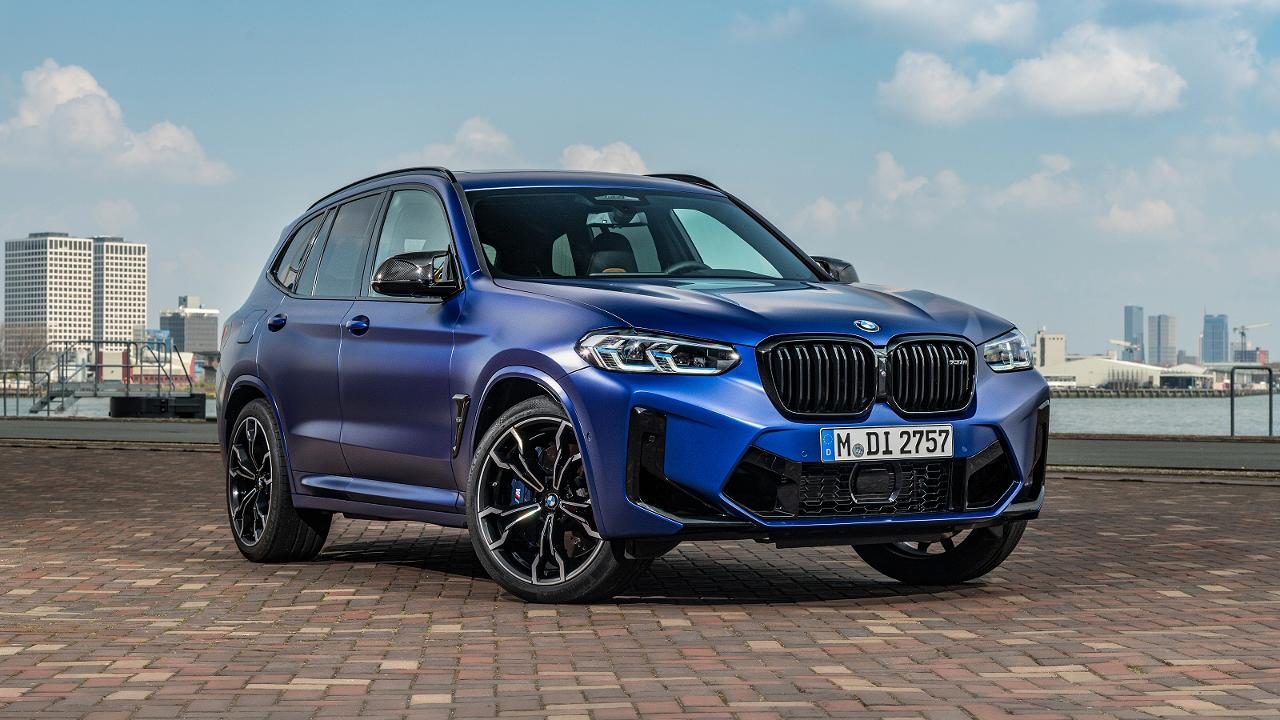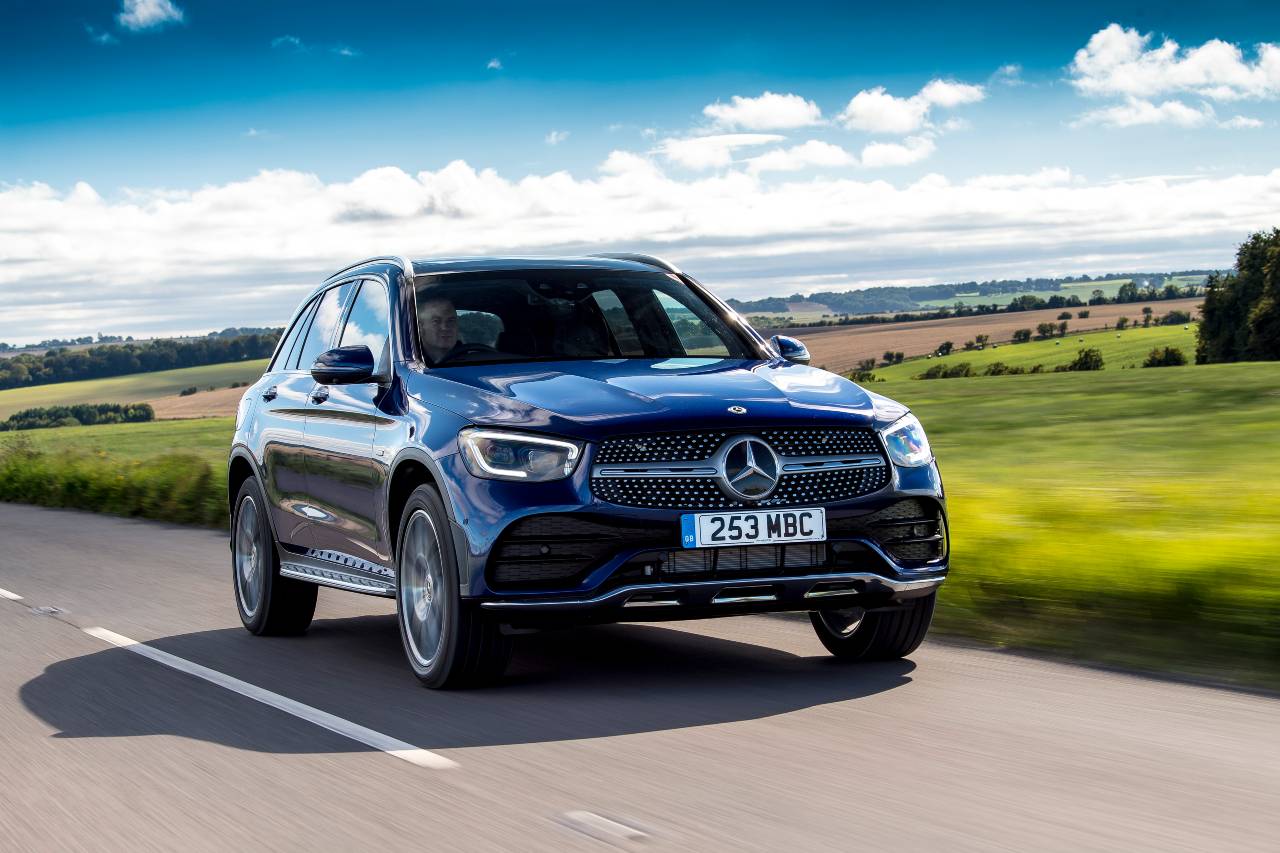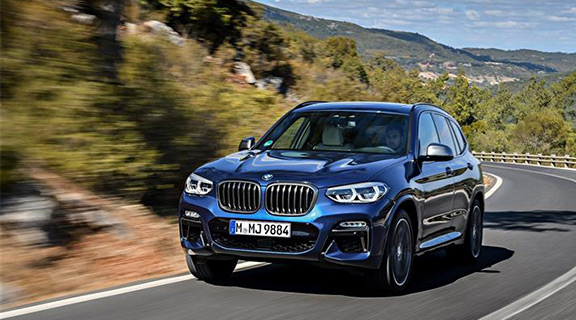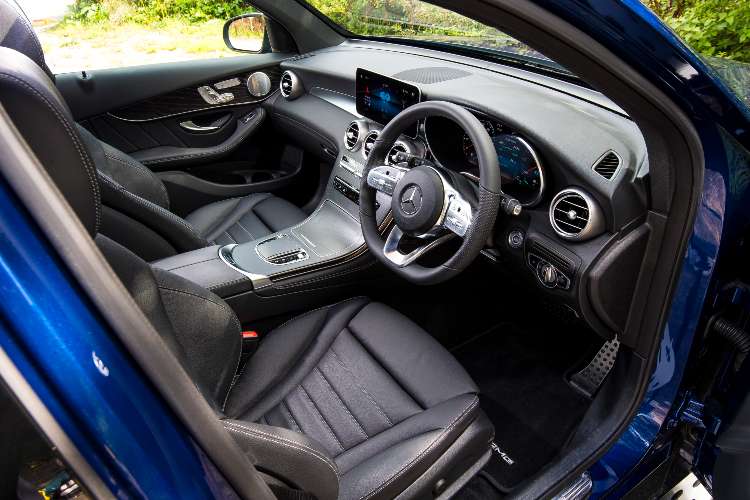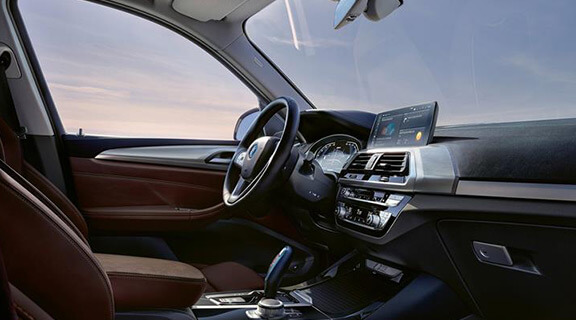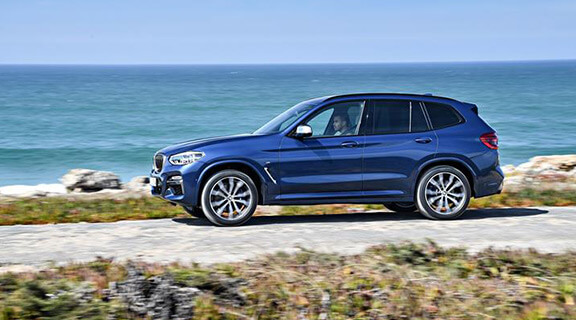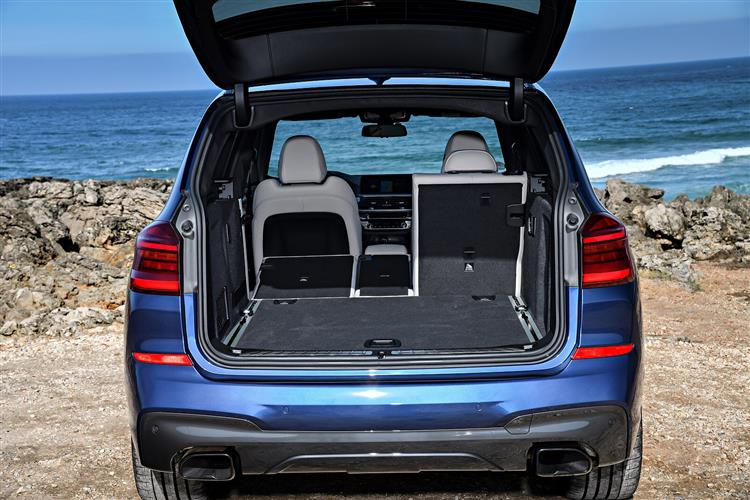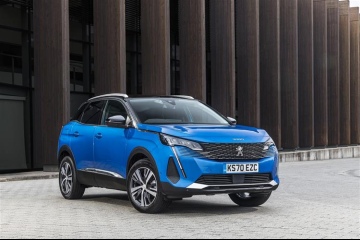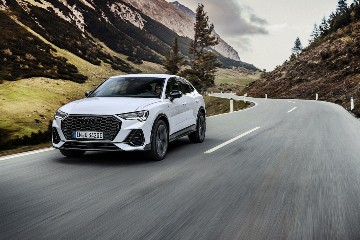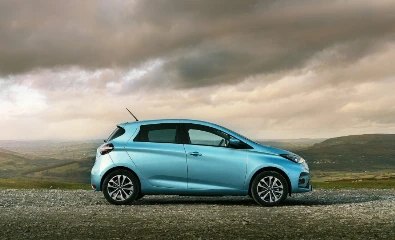It’s a classic heavyweight German face-off here, as Mercedes squares up to long-time adversary BMW in the hotly contested ‘midsized premium SUV’ class. But which is the best car leasing option for you?: the 3-pointed star’s GLC or the blue-and-white roundel’s X3? We put the two against each other looking at engine choices, economy, speed, trim levels, driving experience and practicality to help you make a perfect choice.
Which One Of These 2 Came First?
The X3 launched in 2003, becoming BMW’s second recognised SUV in the process (after the X5 of 1999), whereas the GLC didn’t appear in showrooms until 2016. Now, technically, the GLC is Mercedes’ second attempt at this size of SUV, as it built the boxy GLK from 2008-2015. But we never got the GLK over here in the UK, which means that – to all intents and purposes – the GLC is the Mk1 Mercedes midsized premium SUV, while the X3 is BMW’s third attempt at such a confection.
So What Are Their Main USPs?
As if representing their respective parent companies’ overarching DNA in microcosm, the Mercedes is all about supreme refinement, quality and comfort, and the BMW aims to look sporty, go like the clappers and have a better chassis. Now, there’s some overlap – we’re not saying the X3 is in any way uncomfortable or possessed of ropey build quality, while there are certain models of GLC which can light a fire in the soul of even the most avid petrolhead – but, generally speaking, if you want the easy-going one, pick the Merc; if you want the dynamic one, go for the Beemer.
What Are My Engine Choices In The GLC and X3 Ranges?
We’ll keep this simple and stick to the 5-door, 5-seat SUVs offered by both companies under these specific badge names. This is because both do coupe versions of the same machines – Mercedes calls its version the GLC Coupe, while BMW’s take is the X4 – and they have also both offer fully electric spin-offs: these being the EQC, in the Mercedes’ case, and the iX3 for the BMW.
Starting with the Mercedes, it offers 3 ‘standard’ models with internal combustion engines (ICE) – 1 of which at least has mild-hybrid electric vehicle (MHEV) technology to help it along – 2 plug-in hybrid electric vehicles (PHEVs) and 2 performance models which go under the Mercedes-AMG banner.
For the ICE and PHEV models, all GLCs come with 4-cylinder engines, 4Matic all-wheel drive and a 9-speed 9G-Tronic transmission. Choose from 2 diesels, the 194hp 220 d or the 245hp 300 d, and 1 petrol MHEV, the 258hp 300, if you don’t need any serious electrical power. If you do, Mercedes is unusual in offering a diesel-electric PHEV alongside the more typical petrol-electric option – so look at the turbodiesel-equipped GLC 300 de if you fancy being different, with its combined 306hp output, or the 300 e if you prefer petrol for the ICE part of your plug-in machine. As should be obvious, Mercedes uses the lower-case ‘e’ suffix in these model badges to denote their PHEV status.
And if you’re a speed freak, then you’ll need either of the AMG variants. There’s a 390hp GLC 43 first up, using a twin-turbo 3.0-litre V6 petrol engine. This is rapid enough for most people’s needs, but for bonkers pace there’s the AMG GLC 63 S, which switches out the 6-cylinder motor for a monster biturbo 4.0-litre V8, developing a supercar-like 510hp. It’s theatrically noisy and great fun, but not cheap to buy or run.
The AMGs, by the way, still use 9-speed gearboxes, but they are dual-clutch (43) and multi-clutch (63 S) units, rather than traditional torque converters; these fast GLCs are also both equipped with 4Matic AWD, like the rest of the range.
BMW, on the other side of the fence, does pretty much the same thing with the X3, only there’s no V8-powered model at the top of the tree and it also sticks with just the 1 PHEV, a petrol-electric vehicle. Like the GLC, the X3 comes with 2 turbodiesel engines, both of which are MHEVs, so go for the xDrive20d with 190hp or the beefier xDrive30d with 286hp. The change here is that, for the BMW, the 20d is a 2.0-litre 4-cylinder engine, while the 30d is a 3.0-litre straight-6 – it’s not just a more powerful 4-pot, as it is in the GLC when comparing 220 d to 300 d.
There’s then a plain petrol xDrive20i, with a 2.0-litre 4-cylinder MHEV-assisted engine delivering 184hp, and it is this engine which is used as the basis for the xDrive30e PHEV model, which augments the ICE with enough electrical power to deliver 292hp overall.
That covers the regular X3s, which then leaves the fast ones. Here, BMW deviates a little by offering 2 models at what it calls ‘M Performance’ level – this being about the same as the AMG GLC 43. There’s the 340hp turbodiesel-powered M40d on the one hand, and then the petrol-propelled M40i with 360hp on the other, both of which have 3.0-litre, straight-6 engines. Incidentally, mirroring the GLC’s line-up, all BMW X3s have xDrive (4-wheel drive) and 8-speed automatic transmissions.
Although BMW does not fit a V8 to the X3, it has a model just as powerful as the AMG GLC 63 S. Called the X3 M Competition, this also uses a 3.0-litre twin-turbo straight-6, like the M40i, but it’s a totally different engine in the X3 M. All told, it puts out 510hp and totes a heck of a lot of street cred.
Which Is The Fastest Of The GLC and X3 Lines, And Which Are The Most Economical?
Well, for speed, you want either the GLC 63 S or the X3 M, both of which do 0-62mph in less than 4 seconds – astonishing, for such big, heavy machines – and which can do more than 155mph, with the right option packs. Having said that, the GLC 43 and the M40i/d models of the X3 can all do 0-62mph in less than 5 seconds, so they’re hardly slow either.
All of the turbodiesel versions of the Mercedes GLC and BMW X3 claim between 40- and 50mpg, including the potent M40d Beemer, but it is of course the PHEVs in each manufacturer’s line-up which take the honours. BMW states that the xDrive30e will do 117.7-141.2mpg, depending on specification, all while emitting between 45-54g/km of CO2. As a direct comparison, the petrol GLC 300 e is pegged at 108.7-122.8mpg, with CO2 quoted as 52-59g/km.
This is why Mercedes also does the GLC 300 de, which improves the numbers to 134.5-156.9mpg and 48-55g/km of CO2. Expect around 30 miles of electric-only driving range from any of these SUV PHEVs, as a guide.
What Are My Trim Level Choices?
For the Mercedes GLC, the regular models come in AMG Line, AMG Line Premium and then AMG Line Premium Plus, with the AMG GLC 43 and then the AMG GLC 63 S classing as separate specifications in their own right.
That’s a lot of AMG-ery there, but BMW does much the same thing with the X3. It offers xLine and then M Sport specification, before stepping up to M Performance (the M40i and M40d models), and then finally culminating at the M Competition 510hp version, which – like the AMG 63 S – stands as its own ‘trim’ level.
Time was when basic Mercedes and BMW models would come with next to nothing fitted as standard, but those days are long gone. So while the upper specifications of each of the GLC and X3 load in plenty of high-end luxury items, as you’d expect of vehicles operating at this exalted level of the market, an entry-point GLC AMG Line comes with such niceties as 3-zone climate control, a full MBUX multimedia system with a 10.25-inch floating control screen, 19-inch alloy wheels, LED high-performance headlights with adaptive high-beam assist, parking sensors all round plus a reversing camera, heated front seats, leather upholstery, AMG styling inside and out, and much more.
For comparison, the BMW X3 xLine comes with plenty of the same gear – such as 19-inch alloys, 3-zone climate control, cruise control, heated front Sport seats, Sensatec man-made leather upholstery, adaptive LED headlights, front and rear parking sensors plus a reversing camera, and a host of driver assist safety technologies – but if anything is going to swing it on spec, it might be the infotainment. The BMW xLine is fitted with Live Cockpit Professional, a set-up that teams a larger, better-resolution 12.3-inch infotainment screen in the dashboard (eclipsing the Merc’s 10.25-inch affair) with a full 12.3-inch digital instrument cluster. On the GLC, you need to step up to AMG Line Premium specification to get a 12.3-inch cluster (it’s analogue dials and a teeny 5.5-inch affair on the AMG Line, for reference), while the infotainment screen stays at 10.25 inches across the diagonal in all models, right up to the 63 S.
The GLC is offered in ten paint colours, with two of them being notable premium paints named "Manufaktur" by Mercedes. You can find out more about customisations in our GLC colour guide.
What Are The Main Alternatives To The GLC and X3?
Principally, if you just focus on similar size and price SUVs, then you’re looking at the Alfa Romeo Stelvio, the Audi Q5, the Jaguar F-PACE, the Lexus NX, the Maserati Levante, the Porsche Macan, the Range Rover Velar and the Volvo XC60. You could consider expensive, comprehensively equipped examples of things like the Volkswagen Tiguan or Hyundai Tucson to be alternatives to the lower-level GLC and X3 models, of course, and you could even subvert the thing completely and have a look at the smaller vehicles from the very same manufacturers if you’d like – such as the Mercedes GLA and GLB models, or the BMWs X1 and X2. However, it’s that initial group of 8 prestige competitors which are closest in ethos to the GLC and the X3.
What Are They Like To Drive?
Exactly as your preconceptions would have you believe. The GLC is a wonderful cruiser, most at home holding a steady-state speed on a big, open, sweeping A-road, or simply covering the miles with ease on a dual carriageway or motorway. Cabin refinement is absolutely first-rate, while supple, soft suspension means the Mercedes SUV soaks up lumps and bumps in the road surface with ease. You can read our teams thoughts on how it handles in more detail in our GLC review. But, suffice to say it is a genuine pleasure to travel in, if all you need to do is get from one place to another with the minimum of fuss.
The BMW, by contrast, delivers to its driver more handling enthusiasm, with sharper steering, better reined-in body control and a sensation of balance to its 4-wheel-drive chassis which is rare to find in any SUV. Aside from the Porsche Macan and Alfa Stelvio, and maybe also the Jaguar F-Pace, there are few high-riding machines of this size which steer better than the third-generation X3.
You do pay for this with slightly more tyre noise in the BMW at speeds than you’d find in the Mercedes, but it’s nothing too detrimental and – in general – the X3 rides with genial good grace. Just be aware that while both the GLC 63 S and X3 M Competition are incredibly thrilling to command, with noisy and powerful drivetrains and superb suspension settings, their big alloys and firm dampers mean neither are the most comfortable SUVs in the world. In the case of the BMW in particular, the M actually rides quite poorly in general, so you might be better off sticking with the smoother M40i if you want a fast X3 but you’ve got a bad back or something.
What About Practicality?
Both have more than enough room for 5 adults onboard, although both also suffer from having a transmission tunnel running the length of the vehicle which savages foot space in the centre-rear seating position. In essence, if you’re putting 3 very tall, very long-legged people in the back of either of these German SUVs, the person in the middle is not going to thank you for doing so.
Boot space is very close. On the GLC, you get 550 litres with all seats in play and 1600 litres if you fold the second row down. Opt for one of the PHEV models, however, and the location of the hybrid gear means the cargo bay reduces to 395-1445 litres in the Mercedes, which isn’t a huge amount of room.
Guess what, though? The BMW exactly matches the GLC for boot space in regular ICE format – yup, 550 litres all seats in use, 1600 litres with just the front 2 occupied and the rear row folded away. However, it does better as the xDrive30e PHEV, retaining 450 litres in the back as a minimum and rising to 1500 litres maximum. Bravo, BMW!
In terms of storage cubbies, cupholders, bottle recesses in door pockets and gloveboxes, the Merc and the BMW are pretty much much of a muchness, as the old saying goes, so it really comes down to how much clobber you’re going to hurl in their boots if you want to split them on practicality points. That the PHEV X3 is slightly more capacious might just tip the balance in its favour, therefore.
So Which One Would You Choose – The Mercedes GLC Or The BMW X3?
Difficult, because they both have plenty of strengths and very few weaknesses. In truth, you won’t go far wrong picking either of them, because both continue to operate right near – if not at – the very top of this market segment. The X3 is the slightly newer product generation-for-generation, as it launched in 2017 in Mk3 format, a year after the GLC appeared, but in reality, there’s little in it in terms of tech and advancement throughout each SUV.
There’s no doubt that, AMG and M models aside, the BMW X3 drives more sweetly and engagingly than the Mercedes does, so if that’s your be-all and end-all, it’s the Beemer you’ll be wanting. However, we’d say that even at this sort of level of expenditure, customers still want their SUVs to be comfortable before they’re compelling from behind the wheel, and to that end we’d just edge towards the Mercedes GLC in this head-to-head. It’s a close-run thing, but the 3-pointed star sneaks to a narrow win here.
Vanarama Verdict:
Mercedes GLC = 8/10
BMW X3 = 8/10
See our BMW X3 lease deals
For more articles, you can check out our car features and guides section. Or if you're looking for a brand new vehicle, we've got the [best car leasing deals][/car-leasing] on all the latest models.

